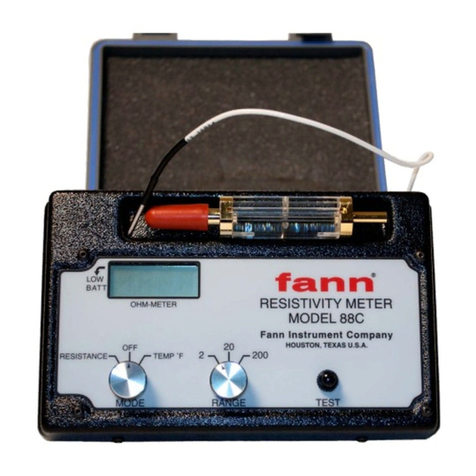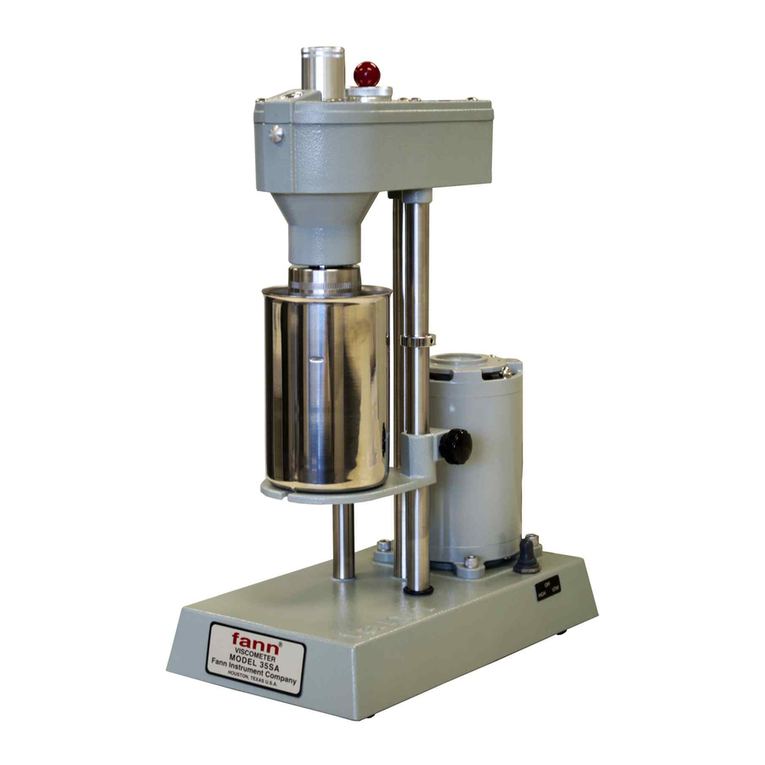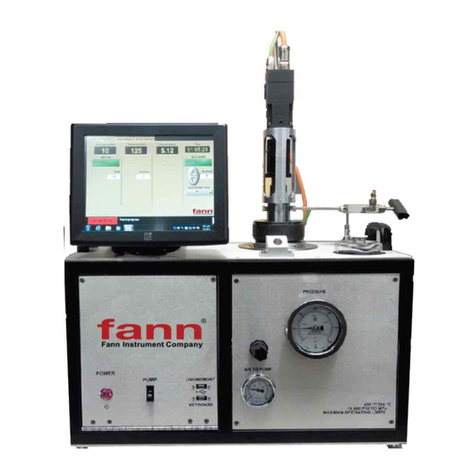
Model 520 HT UCA
D01157216 Revision A, October 2015 10
4 Installation
Upon uncrating the instrument, verify that the instrument and any spare parts on the
packing list have been received and are undamaged.
Once the instrument has been moved to its desired location, air, water, and
electrical connections can be made. The air inlet, water inlet, and water drain
connections are each ¼ inch female NPT connections and are located on the lower
right rear of the instrument. A number of ¼ inch male NPT to 8mm tube fittings
are included for international locations.
It is good practice to leave space behind the instrument so that
qualified Fann personnel can have service access. If this is not
possible, try to make the unit easy to disconnect and move for
service.
Connect the coolant and pressurizing water to the connectors labeled COOLING
WATER and WATER INLET, respectively, on the rear panel of the instrument.
Each fitting has a ¼ inch female N.P.T. connection. The water must be clean and
free of debris that could cause failure of the pump or relief valve. A water filter is
included and must be installed on the water inlet to promote trouble free pump and
relief valve operation. Depending on the quality of the water supply, the filter may
need to be replaced more frequently. Follow the water filter manufacturer’s
recommended replacement interval. Neglecting to install the water inlet filter will
void the instrument warranty. Water inlet supply water must be filtered at 5 micron
or better and have a viscosity between 1–100 cst. Pump performance is affected by
many operating conditions. Extreme temperatures, pressures, and high duty cycles
will increase maintenance frequency. All units are lubricated at the factory with
silicone free semi-synthetic grease. After 2-3 months of normal (50% duty)
operation, the standard spool seals should be inspected for wear and re-lubricated.
Based on this inspection, future maintenance intervals can be planned and further
disassembly and lubrication of other moving seals may be necessary.
4.1 Connecting the Drain Line
Connect drain lines to the connectors labeled WATER DRAIN and COOLING
DRAIN on the rear panel of the instrument. The fittings have ¼ inch female
N.P.T. connections. The drain system must be capable of handling hot water up to
212 °F (100°C) and brief surges of up to 500°F (260°C) steam for short periods of
time during initial cooling of the instrument. If two or more UCA’s are connected
to a common drain line, it is recommended that the drain be 3/8 inch (10mm) inside
diameter, minimum. It is also recommended that the drain system be all metal.
Connect the air supply to the connector labeled AIR INLET on the rear panel of
the instrument. The fitting has a ¼ inch female N.P.T. connection. The air should

































